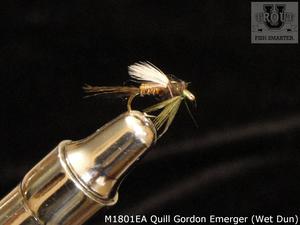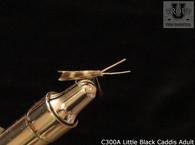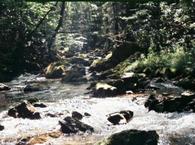
The Quill Gordon hatch will usually start as soon as the water gets into the low 50 degree range and remains there of a couple of days. This can occur as early as late February and continues into the first part of April. Sometimes this hatch can be interrupted by a strong cold front causing the water temperature to drop into low or mid forty degree range. At any particular elevation where the hatch is occurring, the hatch will usually still continue. This event will affect the trout feeding on the emerging duns since they will be eating many more duns under the water than they will be on the surface of the water.
When the wings emerge from the wing pads, they cause the dun to look like it is soaking wet and indeed it is soaking wet. The wings will not be spread out in a normal, beautiful mayfly configuration. They look rather like a small piece of dark gray color paper napkin that had been dropped into water.
During a normal Quill Gordon hatch, the trout eat far more nymphs and emerging duns, under the water than they do on the surface. However, when the conditions described above occur with the water temperature dropping during the hatch, the trout will eat virtually every one below the surface. Because of this, the Perfect Fly Quill Gordon Emerger Dun was developed and should be fished as a wet fly and often times we may refer to it as a wet dun.
Fish this fly when the water temperatures are in the low fifties or high forties until you begin to see trout take the Quill Gordon duns on the surface. Once these wet (soaked) mayflies reach the surface they have to drift for a long way to allow their wings to dry out. They may drift as much as several yards before their wings are dry enough for them to get airborne. When this happenes, you will not only see the trout take them, but you will also hear it. This is a very exciting time for the fly fisherman to use a Perfect Fly dun as a dry fly.





